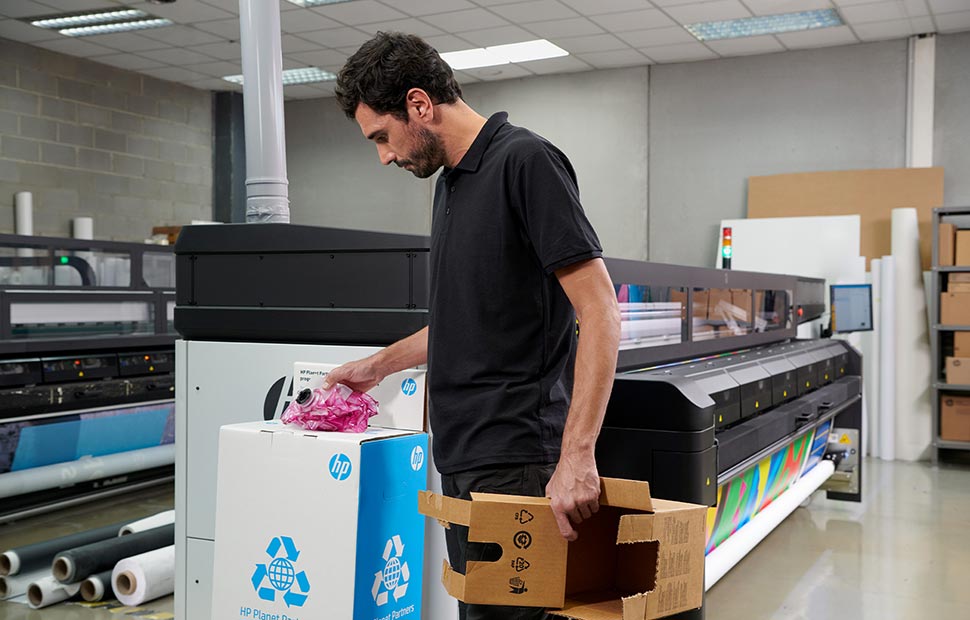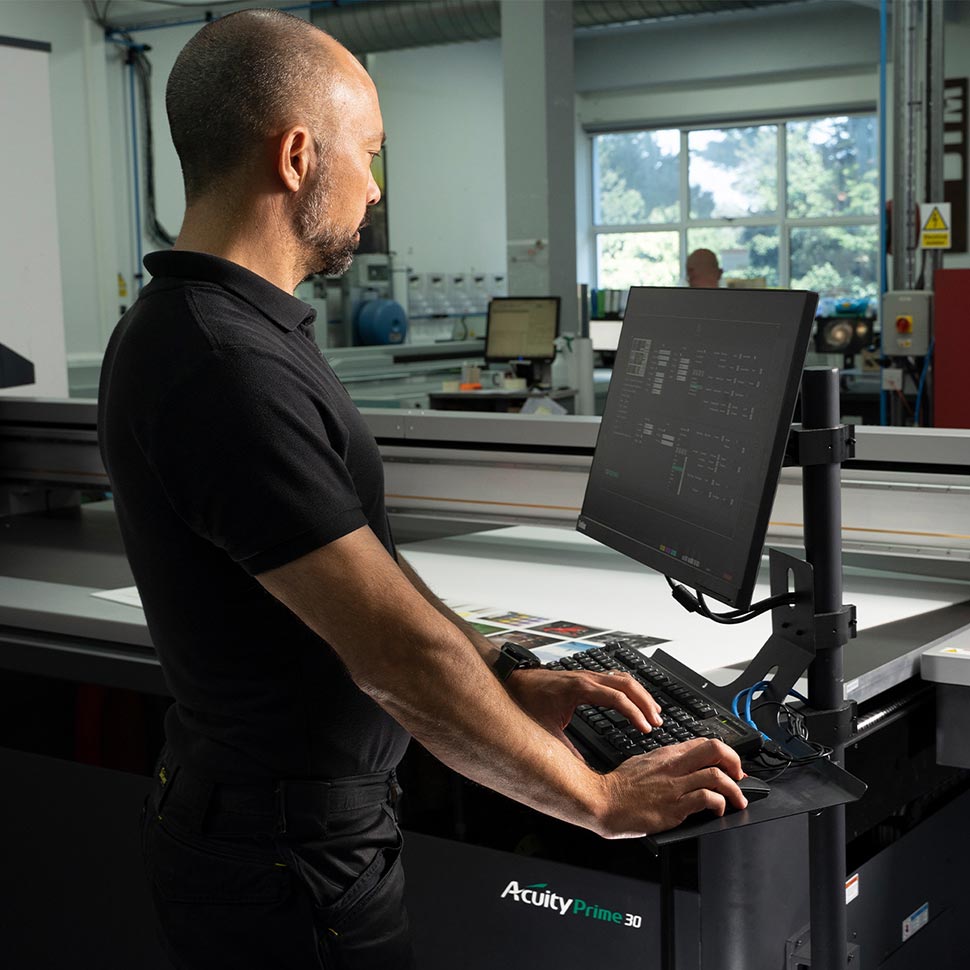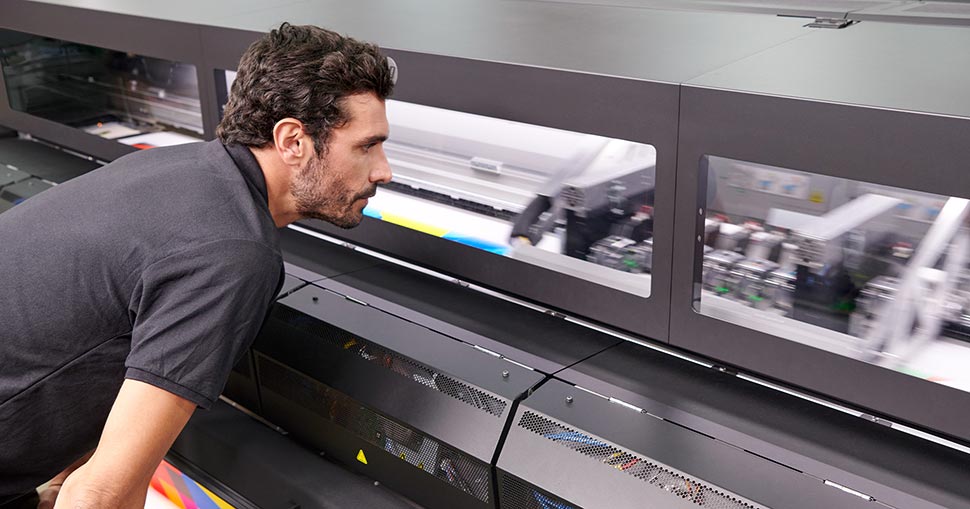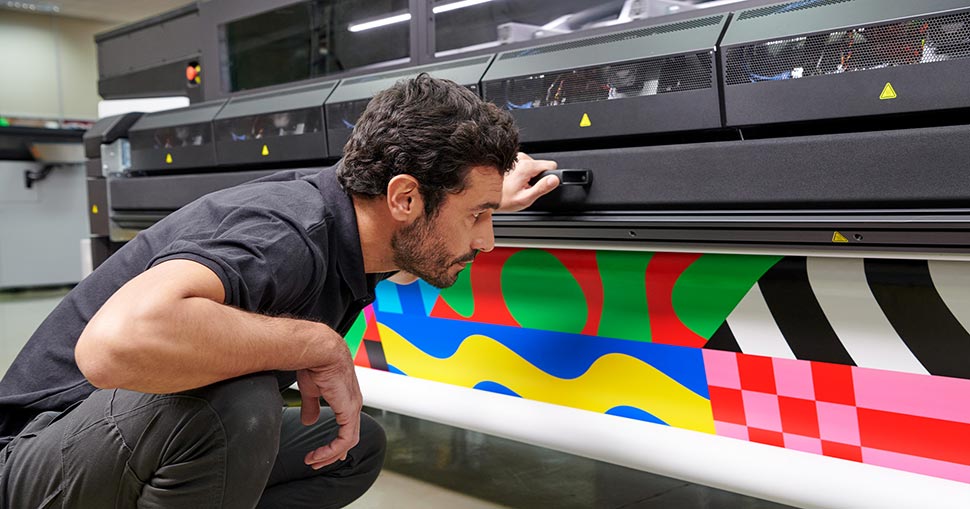Investing in new equipment is crucial to the success of any print business; the wide range of options available means the actual buying process is far from straightforward. Here, LFR considers the importance of involving operators in this process and how this can help print companies buy correctly, install seamlessly and so get printing profitably without having to deal with avoidable issues.
Manufacturers and suppliers continue to wax lyrical about new investment and how this is the only way of ensuring your business keeps pace with the ever-changing demands of the market. In fairness, they are right; you are not likely to expand or grow without looking at ways to improve your output, be this the type of work you offer or the quality of applications you can produce.
While it may be all well and good saying “invest to succeed”, when it comes to the actual process of buying new machines, this is a whole different kettle of fish. Take a moment, if you will, to consider just how many models of printer are out there; how do you go about identifying the machine that will allow you to achieve your goals, whatever they may be?
The solution may be simple but extremely effective – talk to your operators. What do they really want from a new machine? Management will have an idea of how production works and know what the company is delivering, but who better to advise on what sort of machine to go looking for than those who are working with it day in, day out?
Obviously, the decision as to which machine to buy will be down to management, but that does not mean operators cannot have a major role in the buying process. Having operations staff tag along to product demonstrations and trade shows offers something of a win-win; operators can pick out the machines that will best solve their production issues, while management will have greater insight as to what sort of machine they should be looking for.
Collaborative approach = successful and efficient print environment
This is certainly the viewpoint of Bruce Van Greunen, UK and Ireland Large-Format Print Pre Sales Technical Consultant at HP. Bruce said as the operator works day-to-day with the printer, media and artwork, they will see potential benefits or pitfalls in production that is not always visible to the management.
“They know what is acceptable or not for the current customer base, they also know where the strengths and weaknesses are in the production line, so having the operator’s insights can be invaluable,” Bruce said.
“When the operator is included in the early stages of investing in new equipment, they better understand the direction the business may be wanting to move into, and being part of the decision-making process makes the operator feel valued, and as such will be more invested to make it work. This collaborative approach can lead to a more successful and efficient print environment.”
Breaking down such an approach, Bruce presents some of the key advantages to involving operators in the buying process early on. He said operators can help assess the specific needs of a printing operation, as well as identify the types of materials, sizes, and print quality requirements necessary for your projects. This information is crucial in selecting a printer that meets exact specifications.
Bruce also said operators are familiar with in-house existing workflow and processes, therefore by involving them early can help ensure the new printer integrates smoothly with the current setup, which in turn reduces disruptions and downtime.
Expanding on this, large-format print machines in particular can have a steep learning curve. Print operators have the skill levels and training to help identify printers that are user-friendly, as well as ensure those that will be working with it receive the proper training to operate it efficiently.
“Print operators are key in achieving the desired print quality,” Bruce said. “Involving them can help you select a printer capable of delivering the quality standards your clients or projects demand.
“Understanding your daily print volume and capacity requirements is essential. Print operators can help determine whether the chosen printer can meet your production needs or if additional units are required.
“Finally, engaging print operators in the decision-making process can improve morale and job satisfaction. When employees have a say in selecting the equipment they work with, they are more likely to embrace and excel in their roles.”

Well-rounded decision-making process
On the flip side, Bruce issues a warning about going into the buying process without the knowledge and expertise of operators. He said that if the operator is not invested, or simply does not like the change, the learning curve is extended, meaning productivity drops and waste increases.
For this reason, Bruce suggested extending the invitation to other members of the business to help ensure the investment you plan to make is the right and most effective one. These range from IT staff to maintenance and service teams.
“If the printer is integrated into your network or requires connectivity to other systems, the IT team should be consulted,” Bruce said. “They can assess the technical requirements, such as compatibility with existing software, network infrastructure, and security considerations.
“If your business produces creative or design work, involving the creative teams can help ensure that the new equipment meets their design and quality requirements.
“Next, the finance team should also be consulted to assess the budget and long-term financial implications of the investment. They can help determine the ROI, assess financing options, and evaluate the cost of ownership over time.
“Finally, maintenance and service personnel can provide valuable input into ease of maintenance, servicing needs, and the availability of spare parts. This can help ensure that the equipment is reliable and can be efficiently maintained.”
Bruce concluded: “As a consultant, and through my many years in the industry I can safely say a huge percentage of challenges with printers are operator related. Having a skilled and dedicated print operator is paramount to having a successful print business.
“In the pandemic when travel was difficult, we found companies that had virtual demonstrations, and included a large, cross-functional team in the demonstration, led to better collaboration among stakeholders and more informed and successful investment decisions were made. The integration was much smoother, and the return on that investment were much shorter as everyone felt they had a stake in the process and were invested in making it a success.”
Seamless integration into existing processes
Also weighing in is Marc Beresford, Head of Service and Support at Fujifilm. He agreed that involving operators early in the procurement of wide-format printing equipment brings numerous advantages.
“Operators can offer insights into workflow needs, helping to select equipment that aligns with specific printing demands,” Marc said. “Their expertise aids in evaluating the usability of different models, ensuring that the chosen equipment integrates seamlessly into existing processes.
“This collaboration also helps identify any training requirements for the staff. Ultimately, including operators in the early stages enhances the likelihood of making a well-informed decision that maximises productivity and meets the unique requirements of the printing environment.”
Marc went on to say that involving operators can help address common issues that arise when new machines go in. He gives the example of how a new device may run different software than what was previously used, which in turn can inconvenience operators when they are used to working with another product, thus negatively impacting production rather than improving it.

“Normally the kit is an addition to the many machines that the customer has, and the operator was already over worked with the previous production load and this can be worse if he is asked to train on a new platform that he didn’t have anything to do with during the buying cycle,” Marc said.
“Having the operators included in the early stages benefits the sales process. They feel valued and can help the sale of the machine. The operator then knows the machine he is going to be working with and can influence the sale depending on what machine he prefers.”
Buying new machines should be a team effort
Like Bruce from HP, Marc suggested opening up the buying process to other members of the team to ensure you make the best purchase possible for all areas of the business.
Other stakeholders that can be consulted include IT professionals, helping to ensure compatibility with existing systems and addressing any technical integration challenges. Then there are production managers and supervisors, whose input helps align technology choices with overarching business goals and ensures the selected equipment meets strategic objectives.
There is also a case to consult the finance department to align the budget with the expected return on investment and overall financial strategy, which in turn could have a major impact on the future of the business.
As for wider considerations, Marc suggested speaking with environmental and safety experts, with both areas becoming increasingly important. He said consulting experts here can ensure responsible technology choices for the business.
In addition, Marc said it may be worth speaking with end users and customers to better understand their preferences and requirements, especially if the printed materials are serving specific external purposes.
“By involving a diverse group of stakeholders, you can make more well-rounded decisions that consider technical, financial, strategic, and practical aspects of wide format printing technology,” Marc said.
Will all of this lengthen the buying process? Yes, of course it will, but it will almost certainly save you issues further down the line. After all, what is the point of ploughing thousands of pounds, euros or dollars into a machine that is not going to solve all underlying issues within the business?
Fujifilm’s Marc Beresford summed this up perfectly. He said: “Excluding operators from the equipment procurement process can lead to several pitfalls. Without their input, there's a risk of selecting equipment that doesn't align with practical workflow needs, potentially causing inefficiencies.
“Ignoring operator perspectives may ultimately result in overlooking critical usability issues, leading to frustration and decreased productivity.”
So, there it is. Buying new hardware is a team game, and the bigger the investment, the bigger the team of stakeholders that should be involved in the due diligence. Do it right, and you’ll increase your chances of buying the right printer, getting it installed seamlessly, and most importantly getting it up to profitable productivity speed without unnecessary obstacles and resistance.






